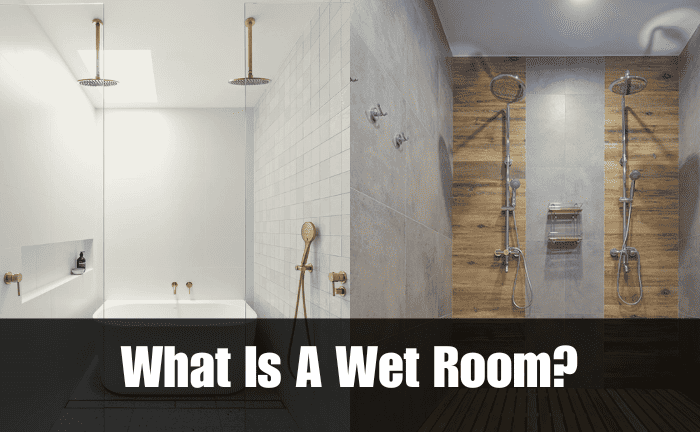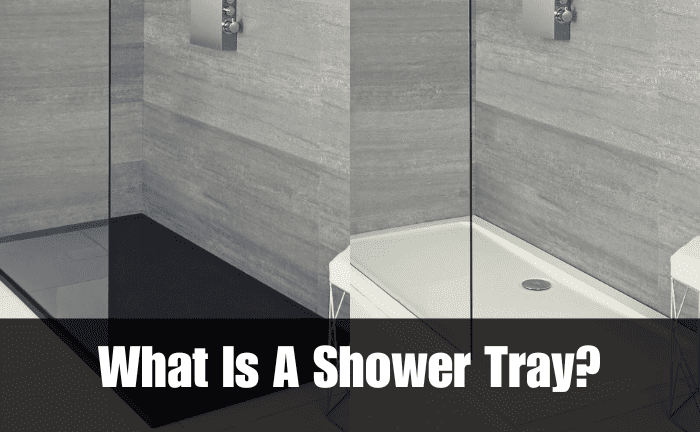When it comes to designing a bathroom, one crucial decision to make is whether to install a wet room or a shower tray. Both options have their pros and cons, but one factor that may sway your decision is the cost. When choosing between a wet room or shower tray, the price is an essential factor to consider.
Generally, a shower tray is cheaper than a wet room, requiring less work and materials. However, the final cost depends on several factors, such as the size of the bathroom, the type of materials used, and the level of customization required. Therefore, it is best to consult with a skilled toilet installer to get an accurate cost estimate.
In this article, you’ll explore the cost differences between wet rooms and shower trays so that you can make an informed decision.
What Is A Wet Room?

A wet room is a bathroom where the shower area is level with the floor, and the entire room is waterproofed. There is no need for a separate shower enclosure or tray, as the water drains directly into a floor drain.
Wet rooms are becoming increasingly popular because of their sleek and modern design, ideal for those who want a luxurious and minimalist bathroom.
Pros
- Easy to clean: As there is no shower tray, a wet room is easy to clean and maintain. There is no need to worry about dirt or grime building up in the corners of a shower tray.
- Customizable: Wet rooms can be designed to suit any size or shape of the bathroom, and they can be fully customized to meet your specific needs.
- Space-saving: Wet rooms can be an excellent option for small bathrooms as they take up less space than a traditional shower enclosure.
Cons
- Cost: Wet rooms are generally more expensive to install than shower trays as they require more waterproofing and drainage work.
- Waterproofing: If the waterproofing is not done correctly, a wet room can lead to water damage to the surrounding areas, such as the walls and floors.
- Slippery floors: As there is no shower tray, the bathroom floor can become very slippery when wet. This can be dangerous, especially for young children or older people.
What Is A Shower Tray?

A shower tray is a shallow basin that sits on the floor and collects water from the shower. It can be made of various materials, such as acrylic, stone resin, or ceramic.
Shower trays are the traditional option for shower enclosures, and they come in multiple sizes, shapes, and styles to suit different bathroom designs.
Pros
- Affordable: Shower trays are generally cheaper to install than wet rooms as they require less installation work.
- Non-slip surface: Shower trays come with a non-slip surface, which can be safer for everyone, especially for older adults or children.
- Low maintenance: Shower trays are easy to clean and maintain, and they are less prone to water damage than wet rooms.
Cons
- Limited customization: Shower trays come in standard sizes and shapes, which can limit your design options.
- Space-consuming: Shower trays can take up more space than a wet room, which can be a problem in small bathrooms.
- Prone to leaks: If the shower enclosure is not installed correctly, water can leak from the shower tray and cause water damage to the surrounding areas.
Cost Comparison: Wet Room vs. Shower Tray
When it comes to cost, wet rooms are generally more expensive than shower trays. This is because the installation of a damp room involves more work and materials. Here are some factors that affect the expense of each option:
Installation
The installation of a wet room is generally more expensive than that of a shower tray. This is because a wet room requires more work to waterproof the entire room and create a sloping floor. The cost of installation can vary depending on the size of the bathroom and the complexity of the job.
In contrast, installing a shower tray is usually a quicker and simpler process. The cost of installation can vary depending on the type and size of the tray and the enclosure you choose.
Related: What Material Do You Use For A Shower Pan?
Materials
The cost of the materials required for a wet room is generally higher than that of a shower tray. A wet room requires waterproofing materials, such as tanking membrane and sealing tape, as well as high-quality tiles and grout.
Meanwhile, a shower tray requires a tray, tiles, and grout. While the cost of the tray can vary depending on the size and material, it is usually less expensive than the waterproofing materials required for a wet room.
Maintenance
The cost of maintaining a wet room can be higher than that of a shower tray. Wet rooms require regular cleaning and maintenance to prevent mold and dampness. You may also need to reseal the tiles periodically to maintain the waterproofing.
On the other hand, a shower tray is easier to clean and maintain. The tray provides a barrier between the water and the floor, reducing the risk of water damage and mold growth.
Additional Costs
In addition to the cost of the wet room or shower tray itself, there may be additional costs to consider, such as:
- Plumbing and electrical work: Depending on the layout of your bathroom, you may need to hire a plumber or electrician to make changes to the existing pipework or wiring.
- Waterproofing: A wet room requires more waterproofing than a shower tray, which can add to the cost.
- Enclosure: If you opt for a shower tray, you must purchase a partition or door, which can add to the cost.
- Tiles: Both wet rooms and shower trays require tiles for the walls and floors, which can vary in price depending on the type of tile and quality.
Related: What Is The Difference Between A Shower Pan And A Shower Base?
Conclusion
Regarding cost, a shower tray is generally the cheaper option compared to a wet room. However, the cost difference may not be significant enough to outweigh the benefits of having a wet room.
Wet rooms offer a sleek and modern design, easy accessibility, and low maintenance, which may be worth the extra cost for some homeowners.
Ultimately, the decision between a wet room and shower tray should be based on personal preferences, budget, and the overall design of your bathroom.
